| Share |  |
 | |||
Food Allergies: Could They Be Your Problem? - Part 3
 Today, more and more health problems are caused or aggravated by the very foods that people eat. In a delayed or “hidden” food allergy, a connection between the foods eaten and the symptoms produced in the body is often unclear, yet a large percentage of chronically ill people who receive no real help from conventional treatment, find that their symptoms disappear when they identify and learn how to desensitize themselves from foods that trigger allergic reactions.
Today, more and more health problems are caused or aggravated by the very foods that people eat. In a delayed or “hidden” food allergy, a connection between the foods eaten and the symptoms produced in the body is often unclear, yet a large percentage of chronically ill people who receive no real help from conventional treatment, find that their symptoms disappear when they identify and learn how to desensitize themselves from foods that trigger allergic reactions.
A delayed food allergy problem arises when we eat or drink something that the body’s immune system perceives as a foreign “invader”. The immune system reacts in a way that sets off biochemical changes that eventually manifest as symptoms in the body.
What Conditions Can Be Helped?
While symptoms vary greatly, allergic reactions to foods are typically associated with digestive and intestinal problems (indigestion, irritable bowel syndrome, leaky gut, poor absorption of nutrients, etc.), headaches, joint aches, asthma,  fatigue, autoimmune disorders, rashes and a host of other complaints and conditions (see “Food Allergies – Could They be Your Problem? – Part One” for further information on symptoms and conditions produced by delayed food allergies)
fatigue, autoimmune disorders, rashes and a host of other complaints and conditions (see “Food Allergies – Could They be Your Problem? – Part One” for further information on symptoms and conditions produced by delayed food allergies)
People can usually handle a certain amount of allergens or toxic substances without any problem, but there is a point where the immune system crosses a threshold and becomes overloaded. Once this happens and the foods the body regards as allergens continue to be eaten, these symptoms intensify and become chronic conditions.
Because symptoms produced by a hidden food allergy can be identical to symptoms of a medical condition; a person should first be tested to rule out any possible underlying medical problems before taking serious steps to identify food allergens in their diet. The recommendations for identifying food allergies given in this article are primarily intended for people who continue to suffer with conditions not successfully treated by conventional medicine (aside from the suppressing of symptoms with the use of drugs).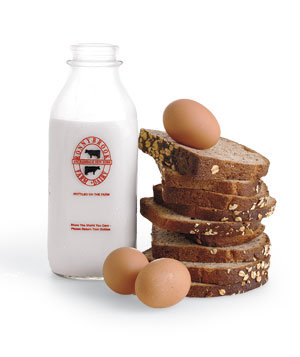
The Challenge of Identifying Food Allergens
Once you conclude that a food allergy might be your problem, the next step is to accurately identify and eliminate the suspected allergen or allergens. This presents a daunting challenge, when you consider that any number of commonly eaten foods can trigger delayed food allergy symptoms.
The fact that eating an allergic food may not always provoke a reaction each time it is consumed can complicate the situation. Furthermore, if a person is addicted to the allergen, which occurs in half the cases, eating the food may even make the person feel better, at least temporarily. Because symptoms can manifest gradually in so many different forms and in various areas of the body makes it even more difficult to pin down which food is in fact culprit.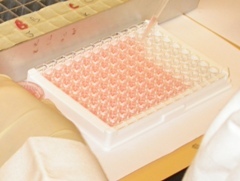
Conventional Lab Testing
Conventional allergy testing in the form of skin prick tests and IgE RAST (radioallergosorbent) blood tests only work to identify immediate-onset “classic” type allergies. They will not detect delayed-onset (or IgG) food allergies. A blood panel known as the IgG ELISA/EIA (Enzyme Immunoassays) was created to test the presence of IgG antibodies in a person’s blood against isolated food proteins from approximately 100 different common allergy producing foods. It claims to provide a quantitative measurement of what foods cause reactions, as well as the strength of the reaction. Some physicians and experts in the field vouch for the reliability of these tests, as long as the testing laboratory used is known to have high quality control standards and the ability to reproduce nearly identical results with what is known as a “split sample” (dividing a blood sample from one person and analyzing it separately). Others question the reliability of the results.
Detecting Food Allergies Using an Elimination Diet
Nonetheless, detecting whether or not you may have a delayed-onset food allergy need not involve blood tests. In fact, many nutritionists and health care practitioners agree that following what is known as an elimination diet is the most definitive (and least costly) way to identify and manage adverse food reactions. This method does require a great deal of commitment and effort, but the results are reasonably accurate and easy to interpret, plus the health-changing information gained makes it more than worthwhile.
An elimination diet is a two-stage process that gives your body the opportunity to let you know what foods are causing your symptoms. In an elimination diet, you abstain for a period of weeks from eating the most common food allergens, along with any food you frequently eat that may be suspect. Once the body has adjusted to the absence of suspected foods, the foods are systematically added back, one at a time, and any reactions are recorded.
Before beginning an elimination diet, you may first find it helpful to keep a careful and detailed record of everything you eat, along with how you felt immediately after eating it and over the course of the next 24-48 hours. Include severity of symptoms so you can distinguish between mild and severe allergic reactions. It is necessary to list all of the ingredients on any food you eat in this “food diary” as well. Making a list of the foods to which you may be allergic will help you to know which foods to avoid on your elimination diet.
Types of Elimination Diets
Elimination diets can vary in the amounts of different foods allowed depending on the severity and type of symptoms. Sometimes people take an easier approach and just eliminate one suspected food from the diet, while observing if there is any reduction in symptoms. A true or standard elimination diet, however, generally excludes the most common allergens, such as wheat, soy, corn, dairy, eggs, gluten, nuts, citrus, fish, chocolate, and shellfish, caffeine, alcohol, and artificial food additives. Excluding all foods that are likely to be the problem is recommended over eliminating foods one at a time due to the fact that most people are sensitive to more than one food.
A similar version recommended by Dr. Jonathan Brostoff in his book, The Complete Guide to Food Allergy and Intolerance, is to do the elimination diet in three stages. The first stage consists of one month of healthy eating (plenty of fresh fruits and vegetables) and the elimination of any food or drinks that have a drug-like action on the body. This would include coffee, tea, colas, cocoa, chocolate, all forms of alcohol, sugar and sugary foods, histamine-rich foods (primarily well-ripened cheeses), artificial sweeteners and any type of food additive in the way of preservatives, colorings, flavorings, etc. Avoiding fast food or take-out food that may contain unknown additives or preservatives is also recommended.
 If the source of your allergy is not discovered by what you eliminate in stage one, you proceed with stage two for approximately three weeks. In this stage, you continue the stage one program, but you also eliminate all common allergens – wheat, dairy, yeast, eggs, plus any foods that you crave, eat quite frequently, or suspect for any reason. The majority of people will discover their allergies during the course of stage one or two. Stage three is a far stricter regimen designed to detect those who have sensitivities to many different foods.
If the source of your allergy is not discovered by what you eliminate in stage one, you proceed with stage two for approximately three weeks. In this stage, you continue the stage one program, but you also eliminate all common allergens – wheat, dairy, yeast, eggs, plus any foods that you crave, eat quite frequently, or suspect for any reason. The majority of people will discover their allergies during the course of stage one or two. Stage three is a far stricter regimen designed to detect those who have sensitivities to many different foods.
The Challenge Phase
Reintroducing the questionable foods is known as the “challenge phase”. Before you “challenge” the first potentially allergic food, be sure that you are eating a varied diet of non-reactive foods, being careful not to eat any one food too often.
After all allergic symptoms have cleared, test each suspected food by eating several portions of one of the foods in a day. Then stop and wait for at least four days to see if a reaction occurs, recording any symptoms you experience. If you do not have any reaction, proceed to test the next food in the same manner. If you have a reaction, you may well be allergic to that food and should avoid it for the next three to six months before reintroducing it to your diet.
No Cheating on this Diet
 The major difficulty of elimination diets is that removing craved foods that comprise a major part of what a person normally eats can be extremely challenging, especially when unpleasant withdrawal symptoms are experienced. As mentioned earlier, approximately half of people have a chemical food addiction to the very foods to which they are allergic (to understand how this happens, read the section entitled “Connection of Food Allergies to Weight Gain” in the first article of this series).
The major difficulty of elimination diets is that removing craved foods that comprise a major part of what a person normally eats can be extremely challenging, especially when unpleasant withdrawal symptoms are experienced. As mentioned earlier, approximately half of people have a chemical food addiction to the very foods to which they are allergic (to understand how this happens, read the section entitled “Connection of Food Allergies to Weight Gain” in the first article of this series).
It is important not to let any withdrawal symptoms be a deterrent because those symptoms usually clear up within a matter of days. Most people then begin to notice significant improvement with their original symptoms within only a week or so. Many with gluten allergies lose a lot of retained water and shed several pounds as well. For other people, it can take up to three weeks before improvement is seen.
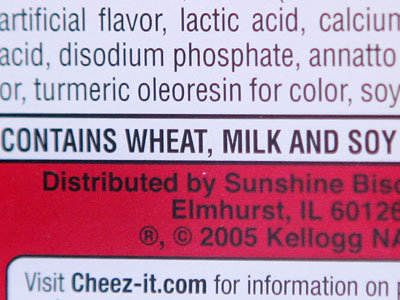 It is important to keep in mind that a particular food must be completely eliminated in every form so that the immune system has a chance to stop reacting to it. If you are not 100% committed and stop following the diet for even one meal, you will not get a clear result. Keep in mind that this is a diagnostic diet and must be done properly the first time for best results.
It is important to keep in mind that a particular food must be completely eliminated in every form so that the immune system has a chance to stop reacting to it. If you are not 100% committed and stop following the diet for even one meal, you will not get a clear result. Keep in mind that this is a diagnostic diet and must be done properly the first time for best results.
There is a great deal more information concerning how to correctly conduct an elimination diet than I can provide in this article. To know all the “ins and outs” of what you should and should not eat involves understanding food families (if you are allergic to one food, other foods in the same food family can also cause a reaction), cross contamination, food labeling, additives and many other such factors. I would recommend that you obtain 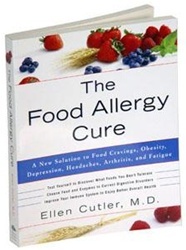 Dr. Jonathan Brostoff’s book, The Complete Guide to Food Allergy and Intolerance – Prevention, Identification, and Treatment of Common Illnesses and Allergies Caused by Food, if you wish to gain a more complete understanding of how to detect and eliminate food allergies using an elimination diet.
Dr. Jonathan Brostoff’s book, The Complete Guide to Food Allergy and Intolerance – Prevention, Identification, and Treatment of Common Illnesses and Allergies Caused by Food, if you wish to gain a more complete understanding of how to detect and eliminate food allergies using an elimination diet.
Hope for Reversing Food Allergies
The good news is that delayed food allergies are reversible, unlike immediate-onset allergies that tend to be lifelong. Assuming that steps are taken to improve digestion and heal intestinal damage from a “leaky gut”, the immune system is able to “unlearn” its previous sensitivities to a food.
Healing a Leaky Gut
As last month’s article explained, a “leaky gut” often precipitates the development of food allergies. It enables partially digested food to reach the bloodstream, which kick-starts the development of immune complexes that form when IgG antibodies bind to food allergens.
Whether or not a food allergy develops depends upon the amount of partially digested food reaching the bloodstream and how well the immune system eliminates any immune complexes that form. Surviving immune complexes become a source of irritation and inflammation in the body and create dysfunction and destruction of body tissue, which in turn lead to disease.
Therefore, in order for food allergies to be successfully reversed, it stands to reason that any leaky gut condition must first be healed. In other words, if you want to do away with food allergies, you must first eliminate the conditions that may have led to their development. Though by no means comprehensive and exhaustive, here are some things you can do in order to heal a leaky gut: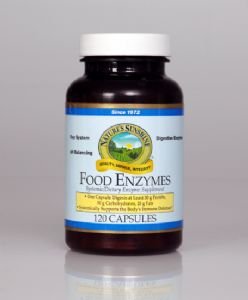
- Stick to an elimination diet for three to six months to give the body ample time to heal, rest and regenerate itself
- Avoid the following as much as possible: alcohol, coffee, caffeinated tea, soda, food additives, drugs, chemicals or anything else that could be an irritant to the gut wall.
- Avoid refined sugars and other simple carbohydrates that can rob needed nutrients, promote inflammation and contribute to the development of Candida in the intestinal tract.
- Eat a high fiber diet with plenty of fruits, vegetables and non-gluten whole grains. Increase the amount of raw foods, because enzymes needed to assist digestion are destroyed when food is cooked.
- Improve digestion by chewing food well and taking supplemental plant-based enzymes, especially ones that break down proteins (protease, bromelain and papain). These enzymes can be taken with meals to help digest consumed proteins as well as on an empty stomach between meals to break down protein allergens in the blood.
- Take probiotics to alleviate intestinal inflammation and promote the growth of good bacteria in the gut. This strengthens the immune system and protects against Candida yeast infections, which provoke allergic conditions.
- In order to counteract the nutrient deficiency created by a compromised intestinal lining, supply the body with key vitamins, minerals and herbs to support the rebuilding process such as vitamin A, B6 and C, along with zinc (deficiency common among allergy sufferers - needed for protein digestion and production of HCL), magnesium, MSM, quercetin, glutamine and omega 3 fatty acids. Because enzymes depend on nutrients to function effectively, poor nutrition can lead to a deficiency in enzymes.
- Take herbs known to help reduce inflammation and irritation and promote healing in the intestinal tract, such as aloe, kudzu, ginger, licorice root, slippery elm, and boswellia.
Conclusion
While you are healing, build a diet around foods that you can safely eat. The avoidance of offending foods for a longer period of time will maximize the healing process. You may want to retest allergic foods every six months. If you have a reaction, eliminate it once again and retest in six months. If you do not have a reaction, you can begin to try eating the food every four days. Once you are able to resume eating a previous food allergen, never go back to eating the food every day or in large amounts, as intolerance can reappear if the food is eaten too frequently.
Next Month’s Focus:
Cutting out foods you eat all the time, even if it just for a period of weeks, can be challenging (to say the least!). Gluten grains (primarily wheat) and dairy are by far the most common food allergens, responsible for the great majority of symptoms people experience. Not coincidently, they also make up the largest part of the average person’s diet.
Whether you are allergic to either or both of these foods, or just want to omit them from your diet in conjunction with doing an elimination diet, I would encourage you to read the next two month’s articles. In those articles, we will look at why these two particular foods create problems for so many, and offer practical suggestions for how to go about eliminating them from your diet.
Sources:
- The Food Allergy Cure, by Ellen Cutler, D.C., M.D.
- The Complete Guide to Food Allergy and Intolerance, by Jonathan Brostoff, M.D. and Linda Gamlin
- Hidden Food Allergies, by James Braly, M.D. and Patrick Holford
Copyright © 2008-2015 Lucinda Bedogne, CNHP, CNC
Post Your Comment...
|
|
||||||||||||


